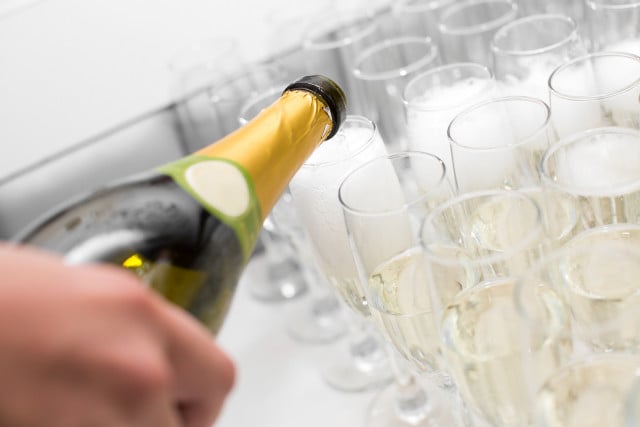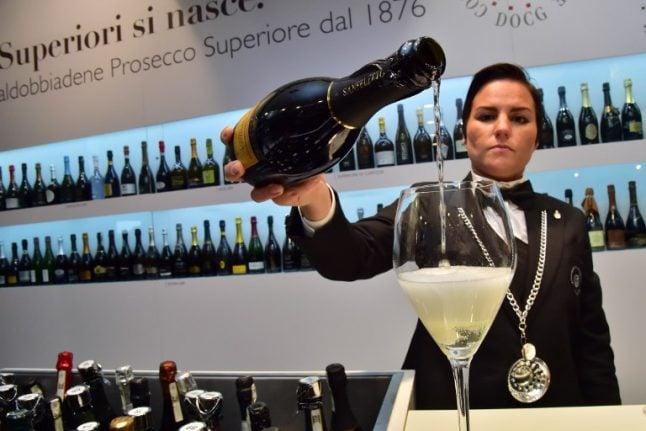The boom in prosecco production in recent years may be an environmental hazard, as it is contributing to the erosion of some 400 million kiograms of soil every year, according to a new study of Italy's biggest prosecco-producing regions by the University of Padua.
Letting too much earth wash away with rain and irrigation could jeopardize the future of the region’s vineyards, which produce 446 million bottles of prosecco every year, 90 million bottles of which are for export.
The research looked at three of Veneto's biggest Prosecco-producing areas, incluidng the Conegliano Valdobbiadene area.
READ ALSO: Brexit could make Prosecco pricier for British buyers, Italian winemakers warn
The research found the prosecco industry was responsible for 74 percent of the region’s total soil erosion, and estimated that the “soil footprint”, or amount of soil lost, for the production of each bottle is about 3.3 kilograms.
“The soil is a non-renewable resource.” states the report. “A territory like the Prosecco area gives excellent results from an economic point of view, but this level of production in the long run will hardly be sustainable “.
Prosecco vineyards could reduce their soil loss, the scientists say. One solution — leaving grass between vineyard rows — would cut total erosion in half, simulations show.
Other strategies could include planting hedges around vineyards or vegetation by rivers and streams to prevent soil from washing away.

Prosecco is more popular thn ever before. Photo: Depositphotos
Demand from abroad for the famous Italian fizz is higher than ever before. Last year's figures show record-breaking sparkling wine sales abroad valued at over 1.5 billion.
Much of that was Prosecco, but the figures included sales of other Italian sparkling wines such as Asti or Franciacorta, which are less well-known outside of Italy.
The UK ranks as the biggest market for Italian sparkling wines, followed by the US and Germany.
Repubblica wrote that rthere have been numerous “false reports” about Prosecco in the British press, which it said had “launched an attack” after the commercial success of prosecco “caused beer sales to drop in the pubs of Great Britain.”
It quoted the president of the Veneto Region, Luca Zaia, as saying British are “purely envious” of Italian prosecco.
Zaia, a controversial figure, has previously dismissed negative reports about Prosecco as “fake news” and “the umpteenth Anglo Saxon crusade against Italian products.”
Italian wines in general are undergoing a difficult period in their relations with the UK. Producers and stakeholders alike have expressed fears regarding how Brexit could affect Italy's wine industry.
READ ALSO:
- US vows to put tariffs on products including Italian olive oil, prosecco and pecorino cheese
- Why Italy wants Unesco heritage status for its Prosecco hills
- Can Prosecco help Italy finally crack the Chinese wine market?



 Please whitelist us to continue reading.
Please whitelist us to continue reading.
Member comments